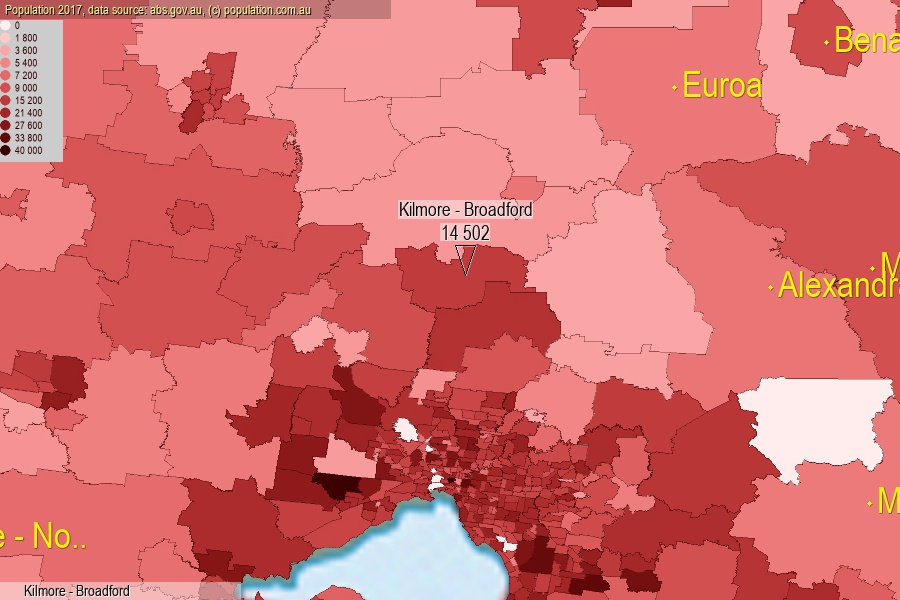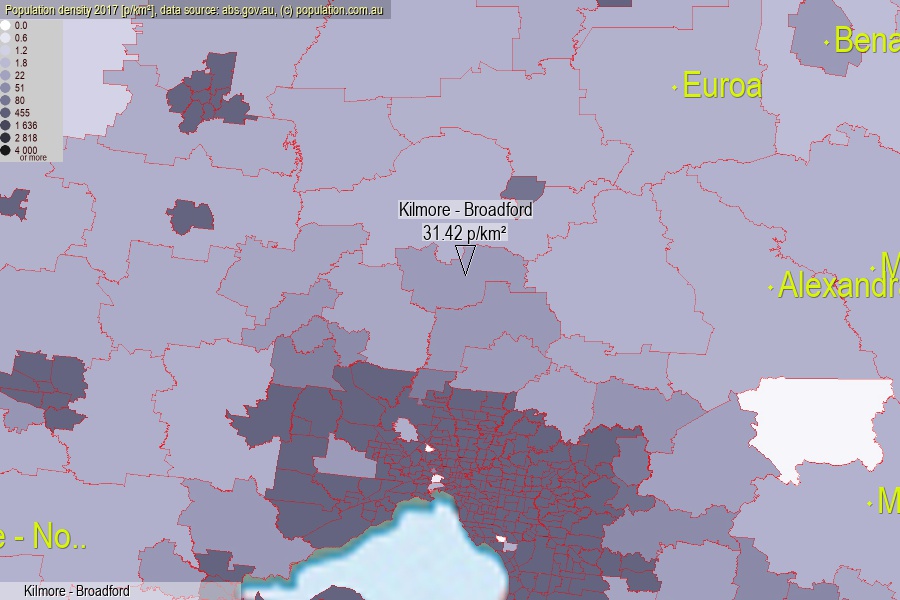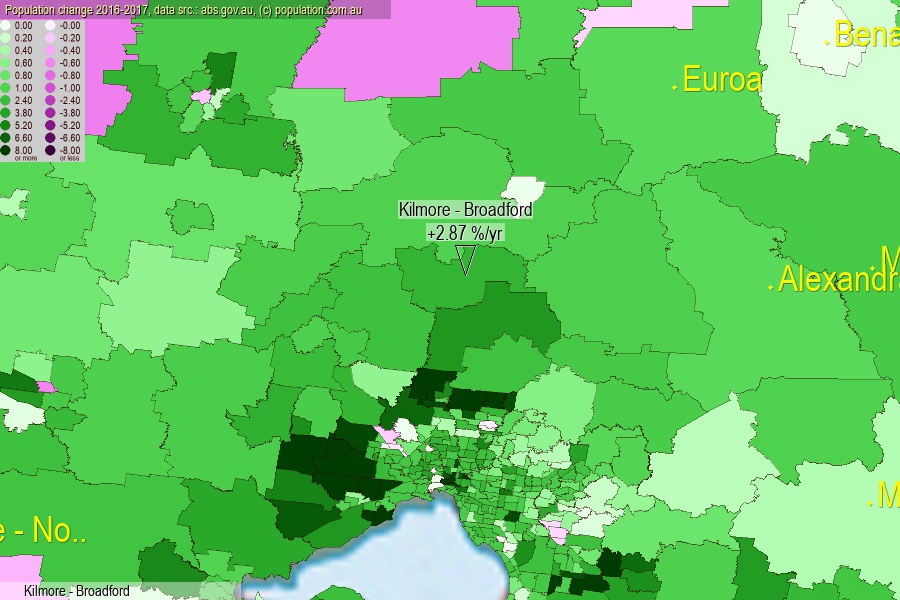 population.com.au
population.com.auLast official estimated population of Kilmore - Broadford (as Statistical Area Level 2) was 14 502 people (on 2017-06-30)[2]. This was 0.06% of total Australian population and 0.226% of VIC population. Area of Kilmore - Broadford is 461.50 km², in this year population density was 31.42 p/km² . If population growth rate would be same as in period 2016-2017 (+2.87%/yr), Kilmore - Broadford population in 2025 would be 18 180. [0]



Click to enlarge. Kilmore - Broadford is located in the center of the images.
Population [people], population density [p./km²] and population change [%/year] [2]
View borders » (new window) [4]
[1991-1992] +1.79 %/Yr.
[1992-1993] +0.90 %/Yr.
[1993-1994] +1.10 %/Yr.
[1994-1995] +1.09 %/Yr.
[1995-1996] +0.85 %/Yr.
[1996-1997] +1.16 %/Yr.
[1997-1998] +0.64 %/Yr.
[1998-1999] +1.11 %/Yr.
[1999-2000] +0.93 %/Yr.
[2000-2001] +2.60 %/Yr.
[2001-2002] +2.31 %/Yr.
[2002-2003] +4.99 %/Yr.
[2003-2004] +3.89 %/Yr.
[2004-2005] +3.21 %/Yr.
[2005-2006] +1.65 %/Yr.
[2006-2007] +3.77 %/Yr.
[2007-2008] +2.02 %/Yr.
[2008-2009] +2.19 %/Yr.
[2009-2010] +3.80 %/Yr.
[2010-2011] +3.02 %/Yr.
[2011-2012] +3.57 %/Yr.
[2012-2013] +3.33 %/Yr.
[2013-2014] +3.01 %/Yr.
[2014-2015] +2.80 %/Yr.
[2015-2016] +3.34 %/Yr.
[2016-2017] +2.87 %/Yr.
[0] Calculated with linear interpolation from officially estimated population
[1] Read more about SA2 and Australian Statistical Geography Standard (ASGS) on abs.gov.au
[2] Population data from Australian Bureau of Statistics (Population and density: 2017; change: 2016-2017)
[3] Digital Boundaries: Australian Statistical Geography Standard (ASGS) 2016.
[4] Border coordinates are simplifyed using Ramer-Douglas-Peucker algorithm.